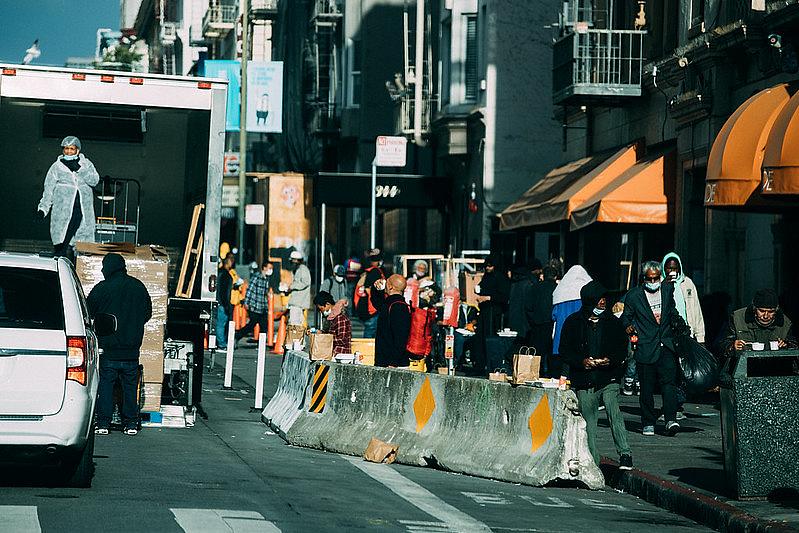Is San Francisco doing enough to address COVID-19’s brutal disparities?

(Dana L. Brown via Flickr/Creative Commons)
The thought of San Francisco’s Mission District elicits images of vibrant murals and mouth-watering food. As one walks along the street and sees traces of Guatemala, Nicaragua, and El Salvador, it’s quickly apparent that the Mission is the heart of the city’s Latinx community; 39% of residents are Latinx. But in the midst of the pandemic, it also became San Francisco’s COVID-19 ground zero.
In April 2020, a study by doctors from the University of California, San Francisco, and a pandemic-borne grassroots organization, the Latino Task Force, conducted a mass testing campaign to investigate how the virus would affect essential workers and the Latinx population. The preliminary results alarmed them: 95% of positive cases were Latinx in the Mission District.
And that trend continues to date: Latinx make up 15% of San Francisco’s population, but nearly half of total cases.
Despite these red flags, the city was slow to come up with a sufficient and rapid response that targeted the Latinx community specifically. By August, San Francisco’s health department had dispersed only a fraction of its COVID-19 testing kits — 9% — to the Mission or toward the Latinx community, even while the stark and disproportionate infection rates remained. Doctors trained in HIV prevention suggested a change in tactics.
Doctors also discovered high rates of COVID-19 transmission in other historically underserved neighborhoods of southeast San Francisco in the meantime. Bayview-Hunters Point, a historically Black neighborhood, currently reports some of the city’s worst new daily case rates.
This has triggered months of grassroot advocacy for more city investment in areas most affected by COVID-19, but these neighborhoods received scant resources compared to San Francisco’s more affluent areas, especially when it came to testing. Six months since the April study, little has changed.
By November, pop-up testing sites in San Francisco’s southeast region averaged a few hundred tests a day and ran once or twice a week; the largest and most popular testing site in the Embarcadero processes 2,000 tests a day, though that neighborhood has low infection and transmission rates.
Across the bay in Oakland, similar trends existed. Between 5% and 10% of tests were used on the ZIP codes with the highest rates of infection in October.
After several articles by Mission Local and a call for hearings, the city announced $28 million in assistance for the Latinx community. But further probing shows that little to none of that money has been released to the community yet.
The biggest change has been a decision to move one of the city’s fixed testing sites in SoMa to the southeast at Alemany Farmers’ Market. Despite the promising location, the city’s lack of robust community outreach and involvement may fail to attract the most affected populations. Something similar happened in San Francisco and Alameda counties with the demise of Verily.
As community organizers requested more bilingual contact tracers, San Francisco responded, which in part allowed 90% of Latinx cases to be investigated by September, and led to praise. At the same time, barriers to employing community contact tracers, especially in Black communities in San Francisco and Oakland, has limited the program’s success, doctors said in October.
Mission Local wants to look at each of these aspects of COVID-19 in the Bay Area: the distribution of testing and possibly vaccines, resources; dispersal of economic relief; and community care. In an unprecedented pandemic driven by a rapidly spreading virus, we know that quickly and adequately providing for the Bay Area’s neediest can be difficult. At the same time, this virus is deadly and hitting vulnerable populations hardest. We need to learn how well the Bay Area is actually attending to these groups.
For our 2020 Data Fellowship project, we want to investigate how many resources are ending up in the hands of those most affected. We also want to spell out what works, especially through the lens of smaller grassroot efforts and studies that seem to be leading the Bay Area’s response. Gleaning some answers now could provide fodder for future public health responses, and give insights on real and meaningful strategies for addressing inequality in the future.


